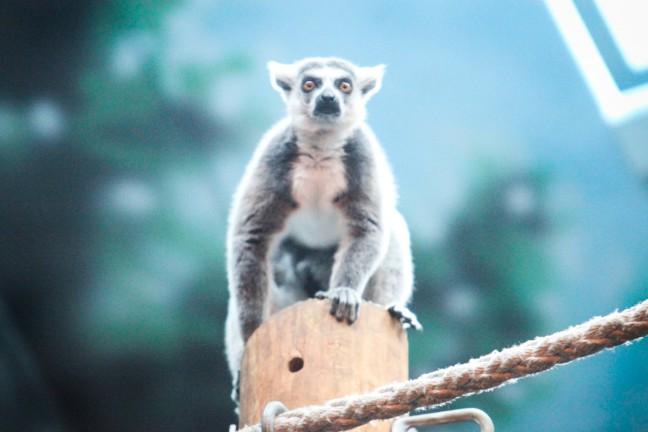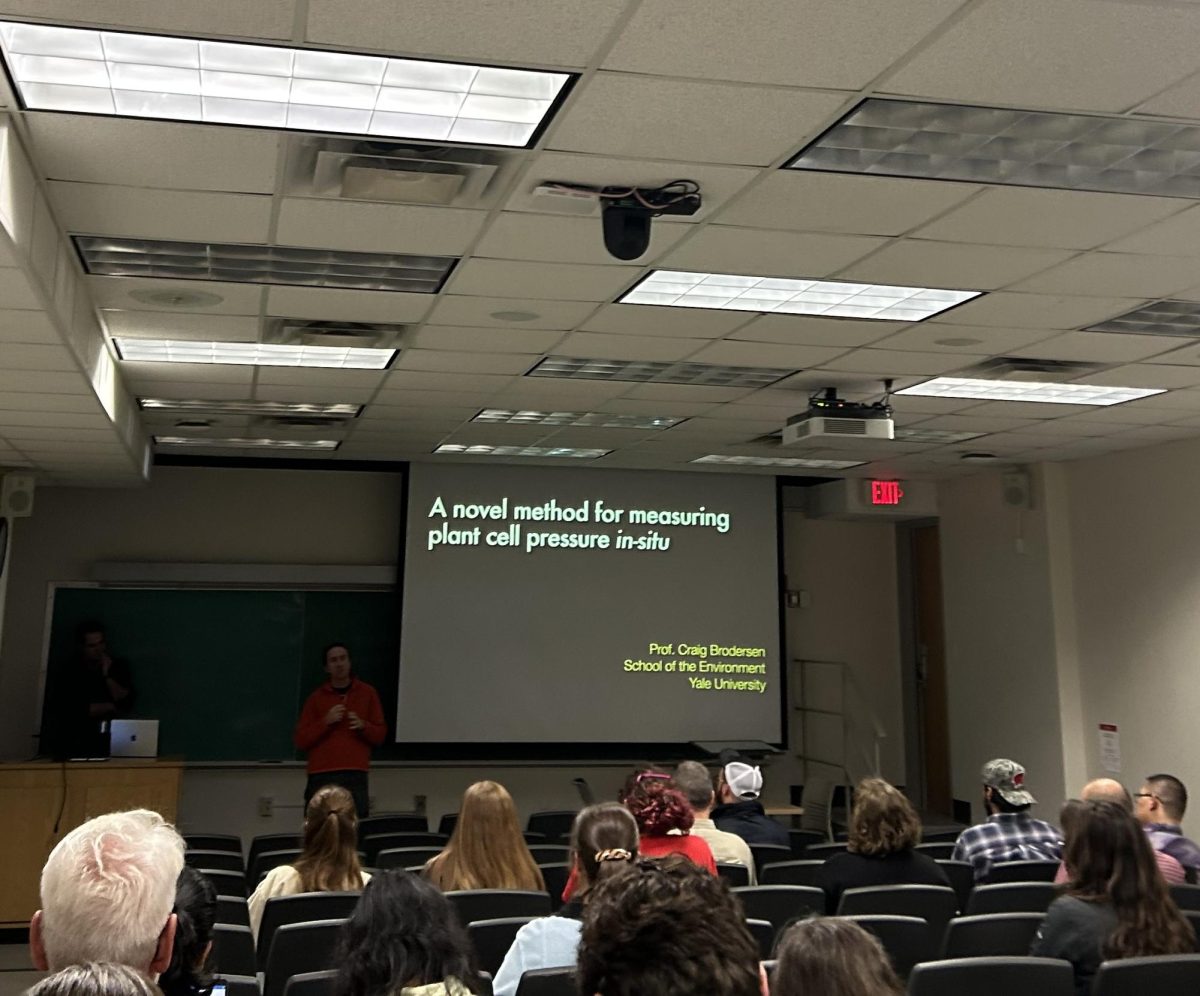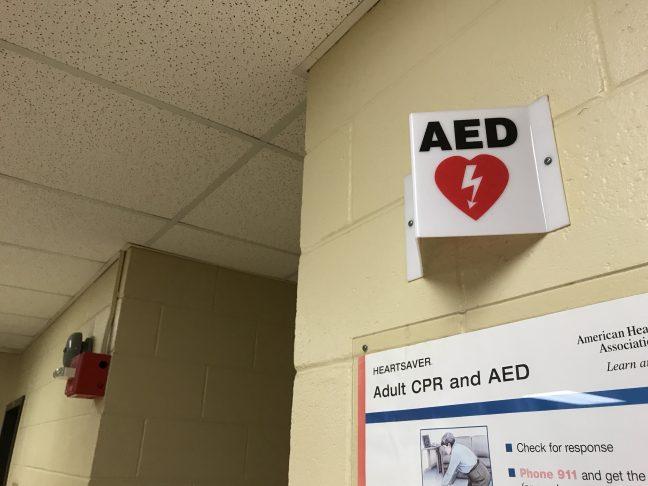In the wake of recent outbreaks of diseases like COVID-19 and monkeypox, an increasing number of researchers around the world are working to preemptively identify possible emerging infectious diseases.
In a recent study by the University of Wisconsin School of Veterinary Medicine, Professor Tony Goldberg identified cell surface receptors that allow the Simian hemorrhagic fever virus to enter human cells. While SHFV is typically found in African wild primates and no infections have been reported in humans yet, Goldberg said it could potentially cross the species barrier and become a zoonosis — a disease animals can transmit to humans — in the future.
Scientists first discovered SHFV in 1964 when macaque monkey colonies died from Hemorrhagic fever in the U.S. and Russia. But the virus’s distribution in wild primates remained unclear for a long time.
Deer research programs at UW highlight Wisconsin idea in action
Goldberg and his collaborators from UW were the first few people who discovered SHFV’s wild origins in Kibale National Park, Uganda and sequenced its genome in 2011.
“I decided to look for unknown viruses in the monkeys and this was just becoming possible because of technological advances in DNA sequencing,” Goldberg said. “So, we took a look and simian hemorrhagic fever virus was one of the viruses that popped right out. We were surprised because we weren’t looking for it. We like to say we didn’t find SHFV, but SHFV found us.”
There have been numerous emerging virulent and zoonotic diseases like HIV and Ebola, both harmful viruses originating in animal populations.
To predict whether a pathogen like SFHV could cross the species barrier, Goldberg said it is essential to gain deep knowledge of its basic biology. This knowledge includes studying which cell receptors a pathogen uses, the kinds of cells it commonly infects, how quickly the virus replicates in its host and whether it mutates.
After 10 years of extensive research on all these features of SFHV, Goldberg and his colleagues found both monkeys and humans share the cell surface receptor for this SFHV.
“The virus can latch onto the human receptor just fine,” Goldberg said. “The virus seems to be able to pass between primate species very easily without any problems with replication and it doesn’t even mutate that much. All those things — together with the fact that these viruses are distributed all throughout Africa and many primates at high levels interact with people — [made] us realize that this could potentially be a zoonosis.”
According to one study, for a pathogen in animals to transform into a pathogen exclusively infecting humans, it must go through a couple of intermediate stages. The pathogen needs to first cause a primary infection by crossing the species barrier. Next, it must start circulating through the human population without the help of the animal host. Lastly, once a lot of rounds of transmission between humans begin to predominate, it can be successfully characterized as a human infectious disease.
While Goldberg and his team said they believe this virus could jump into humans and cause primary infection, it is much harder to predict whether it can persist in the human population because of the complexities associated with successive stages.
The Lab Report: Video games foster intellectual growth, connect scientists to public
Professor in the Department of Pathobiological Sciences in the UW School of Veterinary Medicine Thomas Friedrich said viral transmissions between animals and humans are very common since the human body harbors “a biome for the virus” and other factors help regulate the emergence of infectious diseases.
“Humans get infected with animal viruses all the time, but most of the time, they don’t notice that they are infected — a few cells in a human are infected and that’s it,” Friedrich said. “Or they get a little sick, or maybe they even get very sick and die, but that virus does not get out of that person.”
Goldberg and Friedrich said it is still crucial to engage in genomic surveillance to rapidly identify pathogens like SFHV in populations that closely interact with animals worldwide. Researchers could develop diagnostic tools to test for the pathogens they keep an eye on and start proactively making a library of vaccines against them, according to Goldberg.
Despite its benefits, Friedrich said it could often be difficult to gather resources and garner support for such research, even in studies related to existent human pathogens.
“Once an outbreak is contained and the three-to-five year funding cycle ends, people [think it] is not a problem anymore,” Friedrich said. “That happened in 2014 [with Ebola]. It was really scary, but there are only really small outbreaks now. It’s not a big deal. So, it’s hard to get funding for that.”
UW Zoological Museum preserves over half a million animal specimens for research, education
The aftermath of the COVID-19 pandemic has started to shift this trend. The scientific community is receiving more support for building pandemic preparedness.
Different organizations are allocating more of their budgets to fund research on monitoring potential pathogens. The National Institute of Allergy and Infectious Diseases awarded approximately $36.3 million to academic institutions for research in developing vaccines for a diverse family of coronaviruses in 2021.
“I think now finally we are getting to learn that we need to maintain this infrastructure that we built to monitor the spread of SARS-CoV-2 and its evolution so that we can feed that into updating vaccines,” Friedrich said. “We need to diversify that so we can detect and characterize new pathogens and know what’s going on and have ways to mitigate the situation. So we need to maintain funding, public support and policymaker support for pandemic preparedness in all of its forms.”














